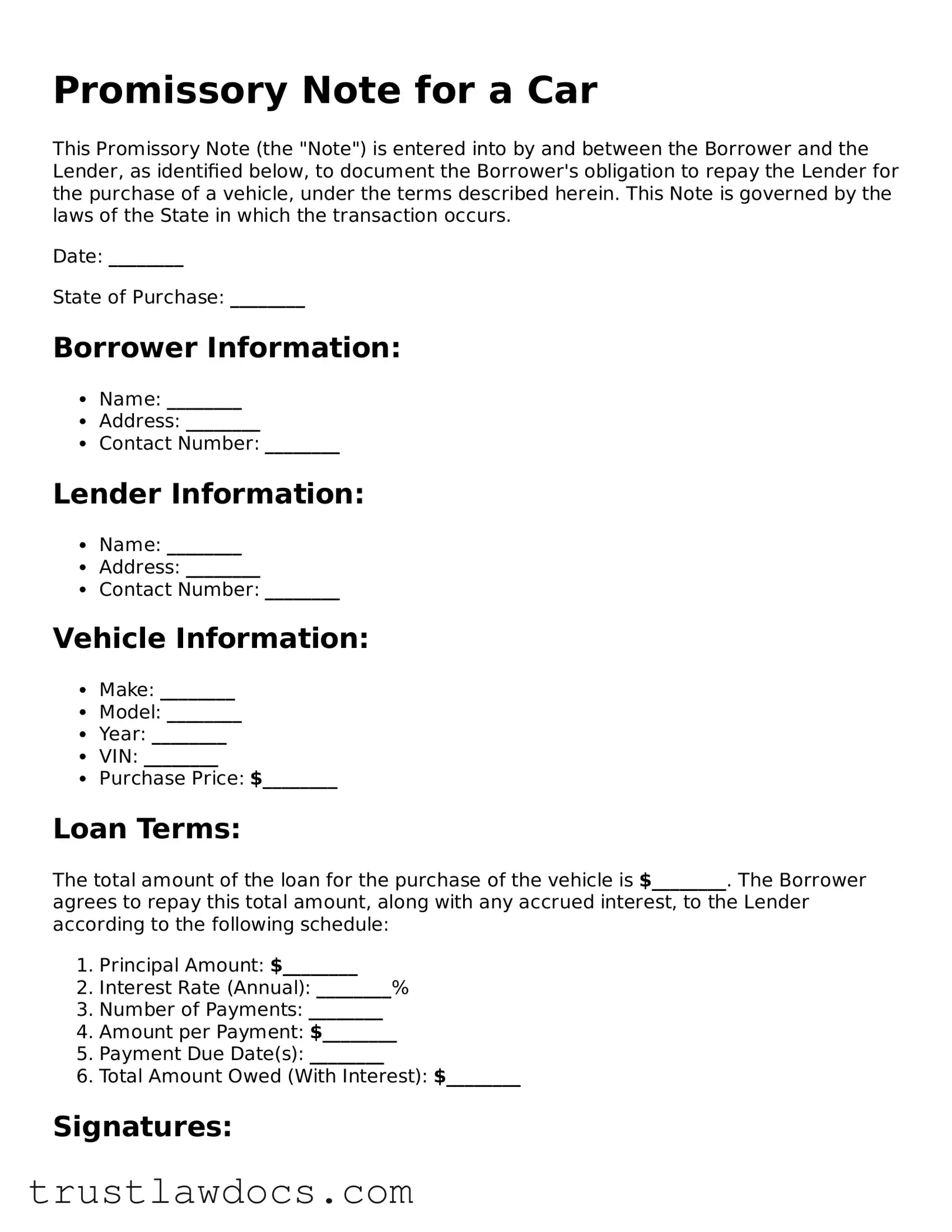A Loan Agreement is closely related to a Promissory Note for a Car form in that both outline the terms under which money is borrowed and must be repaid. Like the Promissory Note, a Loan Agreement specifies the amount of the loan, repayment schedule, interest rate, and the consequences of non-payment. However, a Loan Agreement is typically more detailed and may include clauses about the use of the loaned funds, requirements for insurance on the purchased vehicle, and guarantees or collateral.
A Bill of Sale for a Car shares similarities with a Promissory Note for a Car as both documents are used in the process of buying or selling a vehicle. The Bill of Sale serves as proof of the transaction and transfers ownership of the vehicle from the seller to the buyer. Unlike the Promissory Note, which outlines the repayment of the loan used to purchase the vehicle, the Bill of Sale confirms that the transaction has occurred and details the vehicle's purchase price, make, model, and VIN.
A Security Agreement has aspects in common with a Promissory Note for a Car, especially when a vehicle is used as collateral for a loan. This legal document provides the lender with a security interest in the asset (the car) until the borrower repays the loan in full. It outlines conditions under which the lender can repossess or sell the vehicle if the borrower defaults on the loan, akin to how a Promissory Note specifies the financial obligations of the borrower.
An IOU (I Owe You) is another document similar to a Promissory Note for a Car, as it acknowledges a debt owed by one party to another. However, an IOU is far less formal and detailed than a Promissory Note. It typically includes minimal details such as the amount owed and the parties involved, without specifying repayment schedules, interest rates, or what happens in case of default.
A Personal Guarantee is related to a Promissory Note for a Car when an individual guarantees the repayment of the loan. This legal commitment means that if the borrower fails to repay the loan according to the terms of the Promissory Note, the guarantor will be responsible for repayment. The Personal Guarantee adds a layer of security for the lender, similar to how the Promissory Note lays out the repayment terms and obligations.
An Installment Sale Agreement is akin to a Promissory Note for a Car form, particularly with purchases that are paid over time in multiple payments. This agreement details the sale of goods where payment is made in increments, and just like a Promissory Note, it outlines the payment schedule, interest rates, and the consequences of late or missed payments. The primary difference is that an Installment Sale Agreement often covers the immediate transfer of possession of the item being purchased, even if payment is not yet complete.
Lastly, a Mortgage Agreement shares similarities with a Promissory Note for a Car, with the primary difference being the asset involved. In a Mortgage Agreement, the subject is real property or real estate, whereas a Promissory Note for a Car deals with a vehicle. Both documents serve as a pledge to repay a loan under agreed-upon terms and conditions, including the payment schedule, interest rate, and the consequences of non-payment. A Mortgage Agreement, like a Promissory Note, also often involves a security interest in the item being financed to protect the lender.
